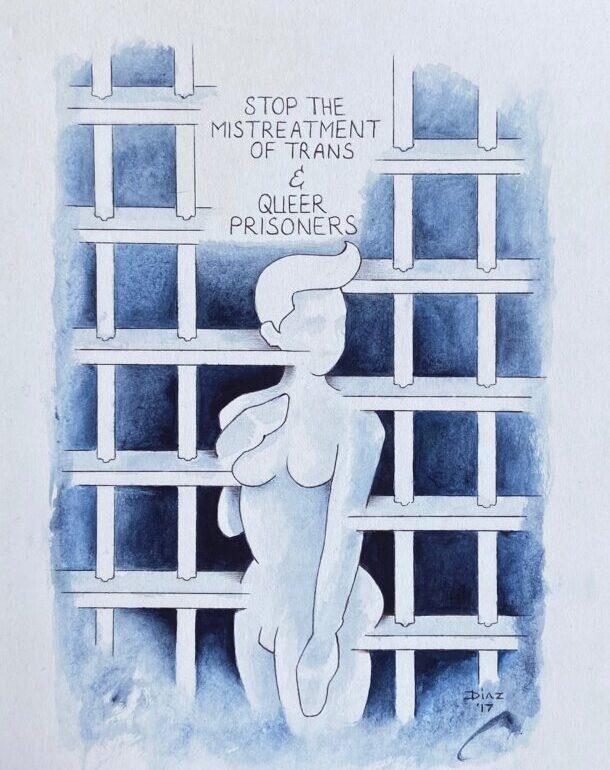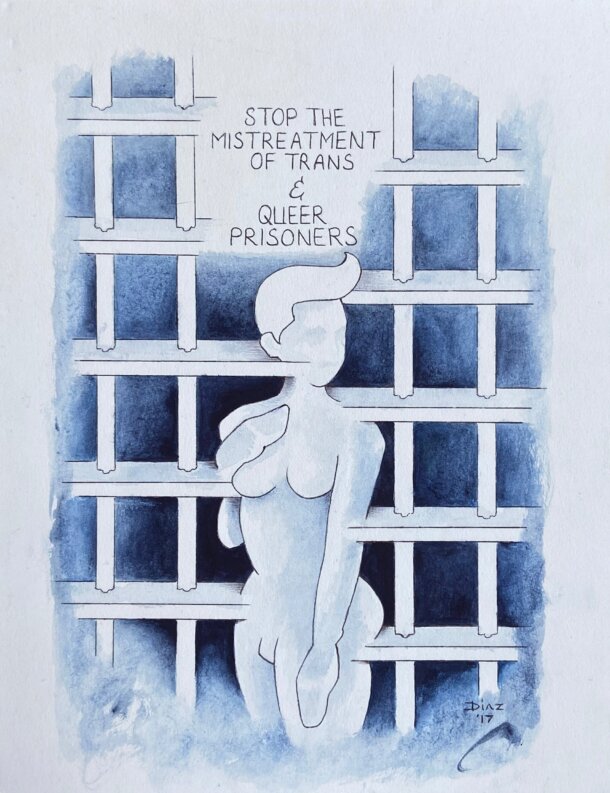I first heard about Jamie Diaz from my Producer and cinematographer, Andrew Fredericks, who had learned the basics of her story and passed them on to me – Jamie is a trans woman incarcerated in a men’s prison in Texas and a prolific artist.
He sent me to her website. And while I was certainly amazed by the quality of art she was creating under the harsh conditions of incarceration, it was when I read one of Jamie’s letters and experienced the intimacy and honesty of her voice, that a vision of a film emerged. So Andrew and I reached out to Gabriel Joffe, Jamie’s friend and advocate in Boston and proposed the idea of making a short documentary. Gabriel brought the idea to Jamie, and upon getting the pair’s blessings, we headed up to Massachusetts and started filming.
One of the first challenges for me is that I am a heterosexual, cisgender woman who wanted to tell a trans centered story. To do that, I enlisted people from the LGBTQ+ community to join our core creative and advisory team, to help steer us away from the pitfalls, clichés and tropes that often accompany stories about trans folks told by people outside the community. I also felt it would be essential that the filmmaking process be fully transparent and collaborative with Jamie and Gabriel, the main participants of the film. We shared language used on the website, fundraising appeals and cuts of the film as it evolved. We devised a way to send Jamie a transcript and still frames from the film to her in prison for her review and approval. Welcoming their feedback, and openly discussing the filmmaking process with them taught me to be more communicative, collaborative, and vulnerable. It was a beautiful and valuable experience for me.
Another essential consideration was to protect Jamie from any potential negative consequences that could arise from the film while she remains incarcerated. For that all important task, we worked with an expert in trans related prison issues and a defense investigator both based in Texas and very familiar with the state’s opaque corrections system.
I also felt a personal connection to Jamie because we both grew up in Houston. My performing arts high school was in the city’s historic gay neighborhood; the very same neighborhood where Jamie spent much of her own youth. I kept imagining that we might have passed each other all those years ago; two people from different worlds, never imagining that our lives would intersect again in this unlikely and most intimate of ways.
As the attack on trans people escalates every day, we want to offer this film as a celebration of life and resiliency and dignity. This is a story about a beautiful friendship, creating one’s chosen family and the restorative power of art. Jamie says it best, “I believe it is important to shed as much light as possible on inequality as well as show the integrity, courage, beauty, and love of our people.”
It has been an honor to make this film with her.
This post was originally published on this site be sure to check out more of their content.









